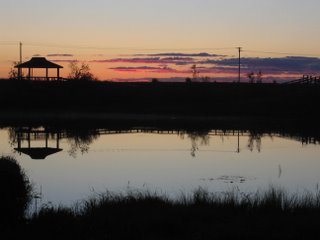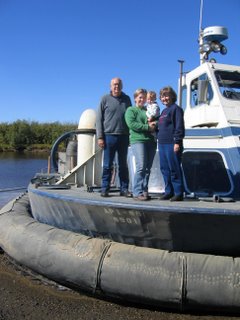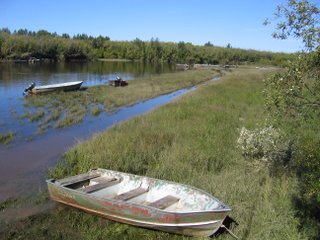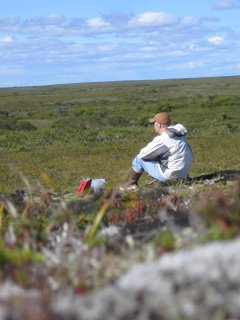Night Float
6 p.m. My evening started off innocently enough. I am on “night float” this week. A position anywhere else in the world which would consist of putting out minor fires and tucking people in for the night. I the world of Rural Alaska Family Medicine, there is no such this as easy. Our first patient had been brought in by medivac from one of the local villages at 29 weeks into her pregnancy with relatively few concerns until a week’s worth of abdominal pain came to a head.
Now, before we discount the poor woman’s choice for waiting this long to come in, please understand that the flight across the wetlands and roadless miles that make up the Delta is not cheap. Also understand that we have a resilient breed out here in Western Alaska. I have seen a child brought in for wrist pain only to find out that he had broken his wrist nearly two weeks previously and was only coming in now for attention because they had been out at fish camp. (We had to actually sedate him and re-break his wrist in the ER, as the orthopedic surgeon in Anchorage wanted us to give it a try before we shipped him in.)
14 mg of morphine on the way in, and a heart rate of 160, twice that of a healthy person. This was one sick woman.
As she lay in one room, teetering on the brink of multi-organ failure and sepsis, our next patient had come in, a 41 year old G13 P11 (that means thirteen, yes, thirteen pregnancies and 11 living children) also in her 29th week of pregnancy, who hadn’t been feeling any pain, as a matter of fact, she hadn’t been feeling anything. No movements for several days and the village health aide couldn’t find any heart beat when she arrived. As she lay on the table I passed the ultrasound wand over her obviously pregnant belly. I found the head, limbs, abdomen, and not a single beat was heard. Per the professional sonographer, it was fetal hydrops, an unexplained death in utero. A plane had been activated from Anchorage to take our patient in for immediate surgery for what was likely an appendicitis. This woman also needed a ride to town.
It is now 8 p.m.
Now, before we discount the poor woman’s choice for waiting this long to come in, please understand that the flight across the wetlands and roadless miles that make up the Delta is not cheap. Also understand that we have a resilient breed out here in Western Alaska. I have seen a child brought in for wrist pain only to find out that he had broken his wrist nearly two weeks previously and was only coming in now for attention because they had been out at fish camp. (We had to actually sedate him and re-break his wrist in the ER, as the orthopedic surgeon in Anchorage wanted us to give it a try before we shipped him in.)
14 mg of morphine on the way in, and a heart rate of 160, twice that of a healthy person. This was one sick woman.
As she lay in one room, teetering on the brink of multi-organ failure and sepsis, our next patient had come in, a 41 year old G13 P11 (that means thirteen, yes, thirteen pregnancies and 11 living children) also in her 29th week of pregnancy, who hadn’t been feeling any pain, as a matter of fact, she hadn’t been feeling anything. No movements for several days and the village health aide couldn’t find any heart beat when she arrived. As she lay on the table I passed the ultrasound wand over her obviously pregnant belly. I found the head, limbs, abdomen, and not a single beat was heard. Per the professional sonographer, it was fetal hydrops, an unexplained death in utero. A plane had been activated from Anchorage to take our patient in for immediate surgery for what was likely an appendicitis. This woman also needed a ride to town.
It is now 8 p.m.






